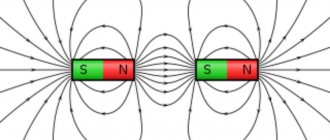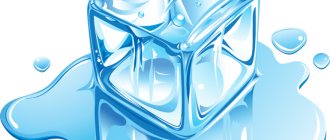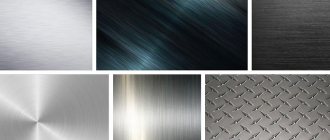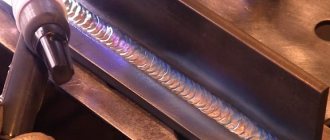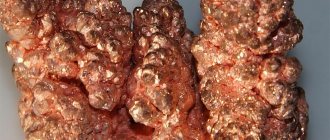Definition
As we know, all material substances can exist in three basic states: liquid, solid, and gaseous. True, there is also a state of plasma, which scientists consider no less than the fourth state of matter, but our article is not about plasma. The solid state of a substance is therefore solid because it has a special crystalline structure, the particles of which are in a certain and clearly defined order, thus creating a crystal lattice. The structure of the crystal lattice consists of repeating identical elementary cells: atoms, molecules, ions, and other elementary particles connected by various nodes.
Molecular kinetic theory
All molecules are made up of tiny particles called atoms. All currently discovered atoms are collected in the periodic table.
An atom is the smallest, chemically indivisible particle of a substance that retains its chemical properties. Atoms are connected to each other by chemical bonds . Previously, we already looked at the types of chemical bonds and their properties. Be sure to study the theory on the topic: Types of Chemical Bonds before studying this article!
Now let's look at how particles in matter can connect.
Depending on the location of the particles relative to each other, the properties of the substances they form can vary greatly. far from each other (the distance between the particles is much greater than the size of the particles themselves), practically do not interact with each other, and move in space chaotically and continuously, then we are dealing with a gas .
If the particles are located close to each other, but chaotically , interact more with each other , perform intense oscillatory movements in one position, but can jump to another position, then this is a model of the structure of a liquid .
If the particles are located close to each other, but in a more orderly manner , and interact more with each other, and move only within one equilibrium position, practically without moving to other positions, then we are dealing with a solid substance .
Most known chemical substances and mixtures can exist in solid, liquid and gaseous states. The simplest example is water. Under normal conditions it is liquid , at 0 oC it freezes - it goes from a liquid to a solid , and at 100 oC it boils - it goes into the gas phase - water vapor. Moreover, many substances under normal conditions are gases, liquids or solids. For example, air - a mixture of nitrogen and oxygen - is a gas under normal conditions. But at high pressure and low temperature, nitrogen and oxygen condense and pass into the liquid phase. Liquid nitrogen is actively used in industry. Sometimes plasma , as well as liquid crystals, as separate phases.
Many properties of individual substances and mixtures are explained by the relative arrangement of particles in space relative to each other!
This article examines the properties of solids , depending on their structure. Basic physical properties of solids: melting point, electrical conductivity, thermal conductivity, mechanical strength, plasticity, etc.
Melting point is the temperature at which a substance changes from solid to liquid and vice versa.
Plasticity is the ability of a substance to deform without breaking.
Electrical conductivity is the ability of a substance to conduct current.
Current is the ordered movement of charged particles . Thus, only substances that contain mobile charged particles . Based on their ability to conduct current, substances are divided into conductors and dielectrics. Conductors are substances that can conduct current (i.e. contain mobile charged particles). Dielectrics are substances that practically do not conduct current.
In a solid matter, the particles of a substance can be arranged randomly or more ordered . randomly located in space , the substance is called amorphous . Examples of amorphous substances are coal, mica glass.
Amorphous boron
If the particles of a solid substance are arranged in space in an orderly manner, i.e. form repeating three-dimensional geometric structures, such a substance is called a crystal , and the structure itself is called a crystal lattice . Most of the substances we know are crystals. The particles themselves are located at the nodes of the crystal lattice.
Crystalline substances are distinguished, in particular, by the type of chemical bond between particles in the crystal - atomic, molecular, metallic, ionic; according to the geometric shape of the simplest cell of a crystal lattice - cubic, hexagonal, etc.
Depending on the type of particles that form the crystal lattice, atomic, molecular, ionic and metallic crystal structures are distinguished.
Types of gratings
Depending on the particles of the crystal lattice, there are fourteen types of it, here are the most popular of them:
Metal crystal lattice.
Next, we will describe in more detail all types of crystal lattice.
Ionic lattice
The main feature of the structure of the crystal lattice of ions is the opposite electrical charges of the ions themselves, as a result of which an electromagnetic field is formed, which determines the properties of substances having an ionic crystal lattice. And this is refractoriness, hardness, density and the ability to conduct electric current. A typical example of an ionic crystal lattice is table salt.
Physical properties
Let's start with the state of aggregation. It is traditionally believed that all metals are solids. The only exception is mercury, a viscous silvery liquid. Its vapors are a contaminant - a toxic substance that causes poisoning of the body.
Another characteristic feature is a metallic luster, which is explained by the fact that the metal surface reflects light rays. Another important feature is electrical and thermal conductivity. This property is due to the presence of free electrons in metal lattices, which begin to move directionally in an electric field. Mercury conducts heat and current best of all, silver has the lowest performance.
The metal bond determines malleability and ductility. According to these indicators, gold is the leader, from which you can roll out a sheet as thick as a human hair.
Most often, the physical properties of metals and non-metals are opposite. Thus, the latter are characterized by low electrical and thermal conductivity and lack of metallic luster. Under normal conditions, nonmetals are in a gaseous or liquid state, while solids are always brittle and fusible, which is explained by the molecular structure of nonmetals. Diamond, red phosphorus and silicon are refractory and non-volatile; they are substances with a non-molecular structure.
Atomic lattice
Substances with an atomic crystal lattice, as a rule, have strong covalent bonds in their nodes consisting of atoms themselves. A covalent bond occurs when two identical atoms share fraternal electrons with each other, thus forming a common pair of electrons for neighboring atoms. Because of this, covalent bonds bind atoms tightly and evenly in a strict order - perhaps this is the most characteristic feature of the structure of the atomic crystal lattice. Chemical elements with similar bonds can boast of their hardness and high melting point. Chemical elements such as diamond, silicon, germanium, and boron have an atomic crystal lattice.
Position of non-metals and metals: periodic table
It is not always possible to find out which group a chemical element belongs to by external signs and physical properties. The properties of metals and nonmetals can be determined by their position on the periodic table.
To do this, you need to visually draw a diagonal from boron to astatine, from 5 to 85 numbers. In the upper right corner there will be predominantly non-metals. There are a minority of them in the table, only 22 elements. Metals are found on the right side of the periodic table at the top—mostly in groups I, II, and III.
Metal grate
The type of bond of a metal crystal lattice is more flexible and ductile than the ionic one, although in appearance they are very similar. Its distinctive feature is the presence of positively charged cations (metal ions) at lattice sites. Between the nodes live electrons that participate in the creation of the electric field; these electrons are also called electric gas. The presence of such a structure of a metal crystal lattice explains its properties: mechanical strength, heat and electrical conductivity, fusibility.
Energy level
The differences between nonmetals and metals are primarily due to the structure of their atoms. Let's start with the number of electrons in the outer energy level. For metal atoms it varies from one to three. As a rule, they have a large radius, so metal atoms easily give up their outer electrons, since they have strong reducing properties.
Nonmetals have a larger number of electrons in the outer level. This explains their oxidative activity. Nonmetals add missing electrons, completely filling the energy level. The strongest oxidizing properties are exhibited by non-metals of the second and third periods of groups VI-VII.
A filled energy level contains 8 electrons. The halogens with valence I have the greatest oxidizing ability. Fluorine is the leader among them, since this element has no free orbitals.
Video
And finally, a detailed video explanation about the properties of crystal lattices.
Author: Pavel Chaika, editor-in-chief of Poznavaika magazine
When writing the article, I tried to make it as interesting, useful and high-quality as possible. I would be grateful for any feedback and constructive criticism in the form of comments on the article. You can also write your wish/question/suggestion to my email [email protected] or Facebook, with respect, the author.
Author page
This article is available in English - Crystal Lattice in Chemistry.
What are semimetals
In the periodic table, between metals and non-metals, there are a number of chemical elements that occupy an intermediate position. They are called semimetals. Semimetal atoms are linked by covalent chemical bonds.
These substances combine the characteristics of metals and non-metals. For example, antimony is a silvery-white crystalline substance that reacts with acids to form salts—typical metallic properties. On the other hand, antimony is a very fragile substance that cannot be forged, and it can even be crushed by hand.
So, typical non-metals and metals have opposite properties, but this division is quite arbitrary, since a number of substances combine both characteristics.

